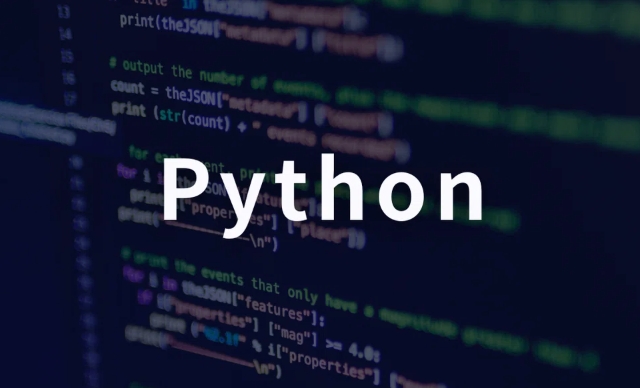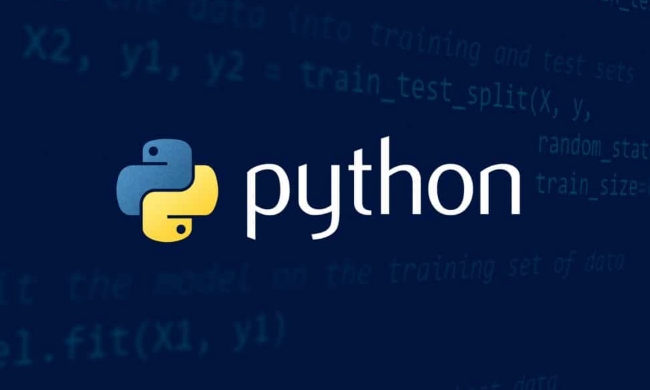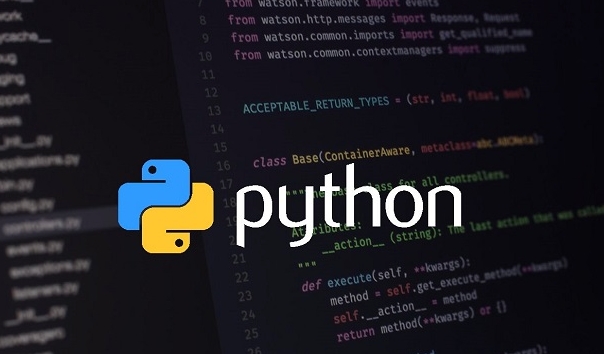Using super() and understanding MRO is the key to solving the problem of multi-inheritance in Python. 1. MRO determines the order of method calls, based on C3 linearization algorithm, rather than simply from left to right; 2. Using super().__init__() instead of explicitly calling the parent class constructor can ensure that all parent classes are initialized correctly; 3. Multiple inheritance is not omnipotent, abuse should be avoided, and combinations should be given priority to improving code clarity and maintainability.

Python's multiple inheritance is indeed a feature that makes people love and fear. It gives you flexible design capabilities, but you can easily fall into pits such as "method parsing order" (MRO) and "diamond inheritance" if you are not careful. If you use it clearly, you can write very elegant and highly reusable code; but if you don’t understand it properly, you may combine several classes and the program will start to deviate.

The following common questions and solutions are the experiences I have summarized after I have struck through the pit in actual projects. I hope they will be helpful to you.

Understanding MRO is the key
In Python, when you use multi-inheritance, the interpreter will look for methods according to a rule called MRO (Method Resolution Order). This order determines which method will be called when multiple parent classes define methods of the same name.
You can view or utilize this order through ClassName.__mro__ or super() . But what many people ignore is that MRO does not simply arrange the parent class from left to right, but is sorted based on the C3 linearization algorithm.

For example:
class A:
def greet(self):
print("Hello from A")
class B(A):
def greet(self):
print("Hello from B")
class C(A):
def greet(self):
print("Hello from C")
class D(B, C):
pass At this time, the result of D.__mro__ is: D → B → C → A → object . In other words, when D instance calls greet() it will first look for B, then C, and finally A.
So, don't take it for granted that the parent class written in the preceding one must be preferred. Only by understanding MRO can you avoid calling wrong methods.
Avoid repeated initialization or overwriting methods
One of the most prone places where multiple inheritances are the conflicts of constructors or initialization logic. For example, if both parent classes write __init__ and you don't pay attention to how to call it, it is very likely that the initialization of a certain class will be skipped.
At this time you should use super().__init__() instead of explicitly calling the parent class __init__ . Because this ensures that the initialization on the entire inheritance chain is executed correctly.
For example:
class A:
def __init__(self):
print("A init")
class B(A):
def __init__(self):
super().__init__()
print("B init")
class C(A):
def __init__(self):
super().__init__()
print("C init")
class D(B, C):
def __init__(self):
super().__init__()
print("D init") The result of running D() output is:
A init C init B init D init
This shows that super() calls the initialization methods of all parent classes by pressing MRO behind you, rather than just picking one of them.
More inheritance is not a panacea, use it with caution!
Although Python supports multiple inheritance, it is not required to be used in all places. Many times, replacing inheritance with combinations is clearer and easier to maintain.
To give a realistic example: Suppose you want to implement a graphical interface system, the buttons may have different behaviors, such as "clickable", "dragable", and "focusable". If you build a base class for each function and then combine it, it can easily lead to structural confusion.
Instead of writing a bunch of mixins, consider splitting the behavior into independent components and then implementing it through object combinations. This not only makes the structure clearer, but also makes it easier to test and expand.
In general, Python's multi-inheritance mechanism is well designed, but you need to be careful when using it. Only by understanding MRO, using super() reasonably, avoiding abuse - only by doing these details correctly can you truly take advantage of the advantages of multi-inheritance. Basically all this is not complicated but easy to ignore.
The above is the detailed content of Navigating Multiple Inheritance Challenges in Python. For more information, please follow other related articles on the PHP Chinese website!

Hot AI Tools

Undress AI Tool
Undress images for free

Undresser.AI Undress
AI-powered app for creating realistic nude photos

AI Clothes Remover
Online AI tool for removing clothes from photos.

Clothoff.io
AI clothes remover

Video Face Swap
Swap faces in any video effortlessly with our completely free AI face swap tool!

Hot Article

Hot Tools

Notepad++7.3.1
Easy-to-use and free code editor

SublimeText3 Chinese version
Chinese version, very easy to use

Zend Studio 13.0.1
Powerful PHP integrated development environment

Dreamweaver CS6
Visual web development tools

SublimeText3 Mac version
God-level code editing software (SublimeText3)

Hot Topics
 How does Python's unittest or pytest framework facilitate automated testing?
Jun 19, 2025 am 01:10 AM
How does Python's unittest or pytest framework facilitate automated testing?
Jun 19, 2025 am 01:10 AM
Python's unittest and pytest are two widely used testing frameworks that simplify the writing, organizing and running of automated tests. 1. Both support automatic discovery of test cases and provide a clear test structure: unittest defines tests by inheriting the TestCase class and starting with test\_; pytest is more concise, just need a function starting with test\_. 2. They all have built-in assertion support: unittest provides assertEqual, assertTrue and other methods, while pytest uses an enhanced assert statement to automatically display the failure details. 3. All have mechanisms for handling test preparation and cleaning: un
 How can Python be used for data analysis and manipulation with libraries like NumPy and Pandas?
Jun 19, 2025 am 01:04 AM
How can Python be used for data analysis and manipulation with libraries like NumPy and Pandas?
Jun 19, 2025 am 01:04 AM
PythonisidealfordataanalysisduetoNumPyandPandas.1)NumPyexcelsatnumericalcomputationswithfast,multi-dimensionalarraysandvectorizedoperationslikenp.sqrt().2)PandashandlesstructureddatawithSeriesandDataFrames,supportingtaskslikeloading,cleaning,filterin
 What are dynamic programming techniques, and how do I use them in Python?
Jun 20, 2025 am 12:57 AM
What are dynamic programming techniques, and how do I use them in Python?
Jun 20, 2025 am 12:57 AM
Dynamic programming (DP) optimizes the solution process by breaking down complex problems into simpler subproblems and storing their results to avoid repeated calculations. There are two main methods: 1. Top-down (memorization): recursively decompose the problem and use cache to store intermediate results; 2. Bottom-up (table): Iteratively build solutions from the basic situation. Suitable for scenarios where maximum/minimum values, optimal solutions or overlapping subproblems are required, such as Fibonacci sequences, backpacking problems, etc. In Python, it can be implemented through decorators or arrays, and attention should be paid to identifying recursive relationships, defining the benchmark situation, and optimizing the complexity of space.
 How can you implement custom iterators in Python using __iter__ and __next__?
Jun 19, 2025 am 01:12 AM
How can you implement custom iterators in Python using __iter__ and __next__?
Jun 19, 2025 am 01:12 AM
To implement a custom iterator, you need to define the __iter__ and __next__ methods in the class. ① The __iter__ method returns the iterator object itself, usually self, to be compatible with iterative environments such as for loops; ② The __next__ method controls the value of each iteration, returns the next element in the sequence, and when there are no more items, StopIteration exception should be thrown; ③ The status must be tracked correctly and the termination conditions must be set to avoid infinite loops; ④ Complex logic such as file line filtering, and pay attention to resource cleaning and memory management; ⑤ For simple logic, you can consider using the generator function yield instead, but you need to choose a suitable method based on the specific scenario.
 What are the emerging trends or future directions in the Python programming language and its ecosystem?
Jun 19, 2025 am 01:09 AM
What are the emerging trends or future directions in the Python programming language and its ecosystem?
Jun 19, 2025 am 01:09 AM
Future trends in Python include performance optimization, stronger type prompts, the rise of alternative runtimes, and the continued growth of the AI/ML field. First, CPython continues to optimize, improving performance through faster startup time, function call optimization and proposed integer operations; second, type prompts are deeply integrated into languages ??and toolchains to enhance code security and development experience; third, alternative runtimes such as PyScript and Nuitka provide new functions and performance advantages; finally, the fields of AI and data science continue to expand, and emerging libraries promote more efficient development and integration. These trends indicate that Python is constantly adapting to technological changes and maintaining its leading position.
 How do I perform network programming in Python using sockets?
Jun 20, 2025 am 12:56 AM
How do I perform network programming in Python using sockets?
Jun 20, 2025 am 12:56 AM
Python's socket module is the basis of network programming, providing low-level network communication functions, suitable for building client and server applications. To set up a basic TCP server, you need to use socket.socket() to create objects, bind addresses and ports, call .listen() to listen for connections, and accept client connections through .accept(). To build a TCP client, you need to create a socket object and call .connect() to connect to the server, then use .sendall() to send data and .recv() to receive responses. To handle multiple clients, you can use 1. Threads: start a new thread every time you connect; 2. Asynchronous I/O: For example, the asyncio library can achieve non-blocking communication. Things to note
 Polymorphism in python classes
Jul 05, 2025 am 02:58 AM
Polymorphism in python classes
Jul 05, 2025 am 02:58 AM
Polymorphism is a core concept in Python object-oriented programming, referring to "one interface, multiple implementations", allowing for unified processing of different types of objects. 1. Polymorphism is implemented through method rewriting. Subclasses can redefine parent class methods. For example, the spoke() method of Animal class has different implementations in Dog and Cat subclasses. 2. The practical uses of polymorphism include simplifying the code structure and enhancing scalability, such as calling the draw() method uniformly in the graphical drawing program, or handling the common behavior of different characters in game development. 3. Python implementation polymorphism needs to satisfy: the parent class defines a method, and the child class overrides the method, but does not require inheritance of the same parent class. As long as the object implements the same method, this is called the "duck type". 4. Things to note include the maintenance
 How do I slice a list in Python?
Jun 20, 2025 am 12:51 AM
How do I slice a list in Python?
Jun 20, 2025 am 12:51 AM
The core answer to Python list slicing is to master the [start:end:step] syntax and understand its behavior. 1. The basic format of list slicing is list[start:end:step], where start is the starting index (included), end is the end index (not included), and step is the step size; 2. Omit start by default start from 0, omit end by default to the end, omit step by default to 1; 3. Use my_list[:n] to get the first n items, and use my_list[-n:] to get the last n items; 4. Use step to skip elements, such as my_list[::2] to get even digits, and negative step values ??can invert the list; 5. Common misunderstandings include the end index not






